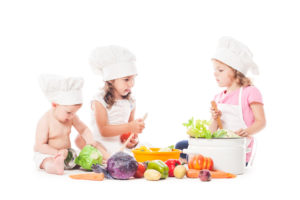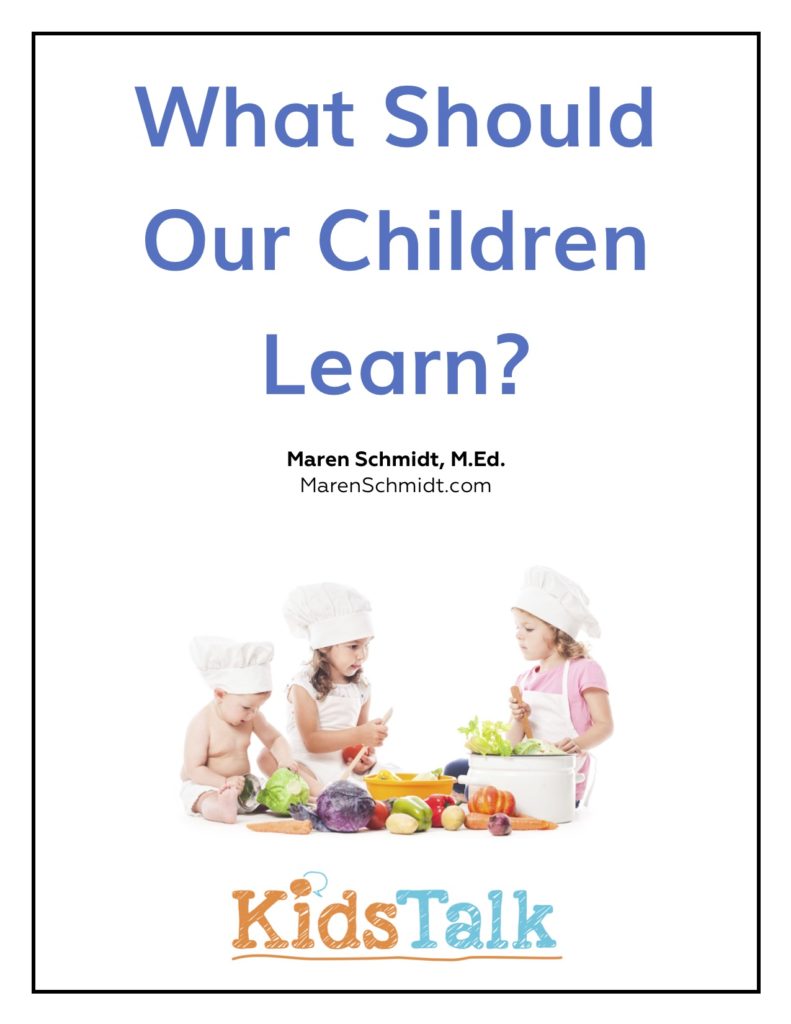
Recently I read an article by a father of a three-year-old boy discussing his son’s prowess in the kitchen, and what a surprising amount of tasks his son could accomplish—washing vegetables, stemming mushrooms, cracking eggs and kneading dough.
The dad observed, “I’m not pushing him. He’s pushing himself.”
Our under seven’s are in a developmental stage where they are absorbing information and skills from the people, objects and tools in their environments.
Now that we know about mirror-neurons, it’s perhaps easier to understand that children learn by watching people perform tasks. If we give our children the tools and time to duplicate that task, they learn to do it quite well. A child with an interesting job to do will do it again, and again and again. Repetition is a learning characteristic of this age child.
Our over seven’s get bored at doing the same task over and over, day after day, but not the younger child. They love the familiar of family, and are learning foundational skills for later learning.
The young child’s inner teacher directs the child to copy tasks he sees others in his environment doing.
The will to do is very strong. And the will develops the skill. The will needs to be nourished by giving the child appropriate tools, time and a safe place in which to repeat and repeat an activity.
That’s one way a child learns to be good at doing things.
Another way is by being presented incremental challenges that enlarge a child’s scope of activity.
Once a child can crack an egg successfully, perhaps the new step would be to introduce a hand whisk or fork and show how to stir the eggs for scrambled eggs. Or perhaps show the child how to peel a boiled egg and slice it. The key is the adult watching to know when the next challenge needs to be introduced, and making sure the challenge is not too hard or not too easy.
In the case of the egg, we can add more tasks until the child can cook scramble eggs independently, put them on a plate with sliced fruit and a piece of toast. I’ve known many five and six-year-olds that could prepare this type of simple meal for their entire family. And clean up afterwards! It all began with their interest in kitchen activities at age two or three.
The way we help our children learn to be good at doing things is by showing them and allowing them to do many activities, adding challenges along the way.
It may seem simplistic, but our children learn by watching and then doing.
Too many children, rich or poor, live their lives in homes and schools that offer little in the way of rich, interesting and life-affirming activities with the time and tools necessary to perfect a skill.
Let’s offer our young children opportunities to develop practical living skills from learning how to care for themselves, others, the indoors and outdoors, as well as learning how to interact with others. From washing hands to washing windows, our young children want to learn how to do things well.
As the dad said, “I’m not pushing him. He’s pushing himself.”
Let’s make sure our children have a place to push themselves.
Sign up below for your free guide, What Should Our Children Learn?


One Response to “Learning To Be Good At Doing Things”